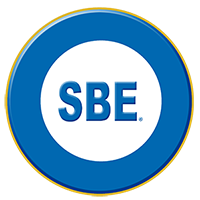By Larry Wilkins, CPBE, chair, SBE EAS Advisory Group
All engineers should be aware by now that the Federal Emergency Management Agency (FEMA) has scheduled the 2017 national EAS test for Wednesday, Sept. 27 at 2:20 p.m. ET. This test will be originated and distributed via IPAWS only; the same manner as the 2016 National Test. The test will be sent with the event code NPT for National Periodic Test. All stations are expected to receive the NPT message from IPAWS or off-air and then to relay the NPT message on-air using their normal studio EAS equipment. The message will be sent with both English and Spanish language text and audio.
In preparation for the test a few items engineers need to check.
1. Verify each EAS unit has the correct time displayed. We have seen a number of units that are off by several minutes or on the wrong time zone. Equipment should be programmed to automatically synchronize to an internet time source. Even if it is set to a time server, check the clock for the correct time.
2. Verify you have a local incoming filter programmed to receive the NPT code, and it is set to automatic relay and not log only. The originator should be set to Primary Entry Point, and the event should be set to National Periodic Test (NPT).
3. Verify your station is receiving the IPAWS Required Weekly Test (RWT) on Mondays at 11:00 a.m. local time. This will assure your equipment is polling the IPAWS national server correctly.
4. If your station plans to rebroadcast the alert in Spanish, verify that the correct settings are programmed to access the Spanish version of the message. Since the procedure varies among equipment, contact the support number for your EAS unit.
5. Engineers should (if possible) be on site for the test on Sept. 27. This way you can verify firsthand the proper reception and relay as well the quality of the audio transmission.
Remember also that the FCC will require all stations to report the reception and relay of the NPT via the Commission’s EAS Test Reporting System (ETRS). The user name and password used for the 2016 test will not gain access to the ETRS for this test.
Filers can access the ETRS home page by visiting the ETRS page of the Commission’s website. Instructions for setting a new user name and password as well as filing the proper forms are available on the ETRS site.
All EAS participants must submit Form One on the FCC ETRS site no later than Aug. 28, 2017.
Multiple Streams on a Single Station
Analog and digital broadcast stations that operate as satellites or repeaters of a hub station (or common studio or control point if there is no hub station) and rebroadcast 100 percent of the programming of the hub station (or common studio or control point) may satisfy the requirements through the use of a single set of EAS equipment at the hub station (or common studio or control point) which complies with §11.32 and §11.33.
In other words, if you have one hub station feeding 100 percent of its programming to several other stations, submit a Form One only for the EAS unit at the hub station. If a station has its own programming, it should be filing at least one copy of Form One.
Concerning digital FM stations with auxiliary streams (HD-2 or HD-3) and television stations with auxiliary streams (.2 or .3) these EAS participants should only file for auxiliary streams if they have their own dedicated EAS units.
For example, if the main channel has one EAS unit and the HD-2 and/or HD-3 stream has a separate EAS unit, they should file a separate set of forms. If all three channels share a single unit, they should file one set of forms.

